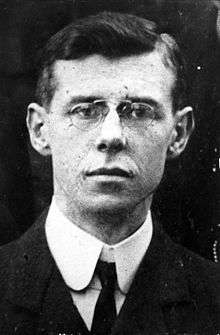Francis Arthur Bainbridge
| Francis Arthur Bainbridge | |
|---|---|
 | |
| Born |
29 July 1874 Stockton-on-Tees, England |
| Died |
27 October 1921 (aged 47) London, England |
| Nationality | United Kingdom |
| Occupation | Physiologist |
Francis Arthur Bainbridge FRS FRCP (29 July 1874 – 27 October 1921) was an English physiologist.
Bainbridge was born in Stockton-on-Tees, County Durham, in 1874 and educated at The Leys School.[1] He entered Trinity College, Cambridge, in 1893, graduating BA in 1896 and earning a doctorate in 1904.[2] In 1911 he became a professor of physiology at Durham University. In 1915 he attained the chair of physiology at St. Bartholomew's Hospital, where he remained for the rest of his life.
Bainbridge is best remembered for showing that an increase in pressure on the venous side of the heart resulted in an increased heart rate due to denervation of vagal influences to the heart. The eponymous "Bainbridge reflex" is named after him, being explained as an increased heart rate due to an increase of right atrial pressure. Bainbridge's findings contradicted "Marey's Law", a law that stated that an increase in blood pressure caused a lowering of the heart rate. Marey's Law was devised in 1861 by French physiologist Étienne-Jules Marey (1830–1904).
Bainbridge also made important contributions in his studies of the mechanism of lymph formation, as well as on filtration properties of the glomeruli in the kidneys. His most popular publications were "Essentials of Physiology" (1914) and "Physiology of Muscular Exercise" (1919).
He was elected a Fellow of the Royal Society in May 1919 [3]
References
- ↑ "Professor Bainbridge - Original Research in Pathology". Obituaries. The Times (42864). London. 29 October 1921. col E, p. 12.
- ↑ "Bainbridge, Francis Arthur (BNBG893FA)". A Cambridge Alumni Database. University of Cambridge.
- ↑ "Library and Archive Catalogue". Royal Society. Retrieved 7 December 2010.